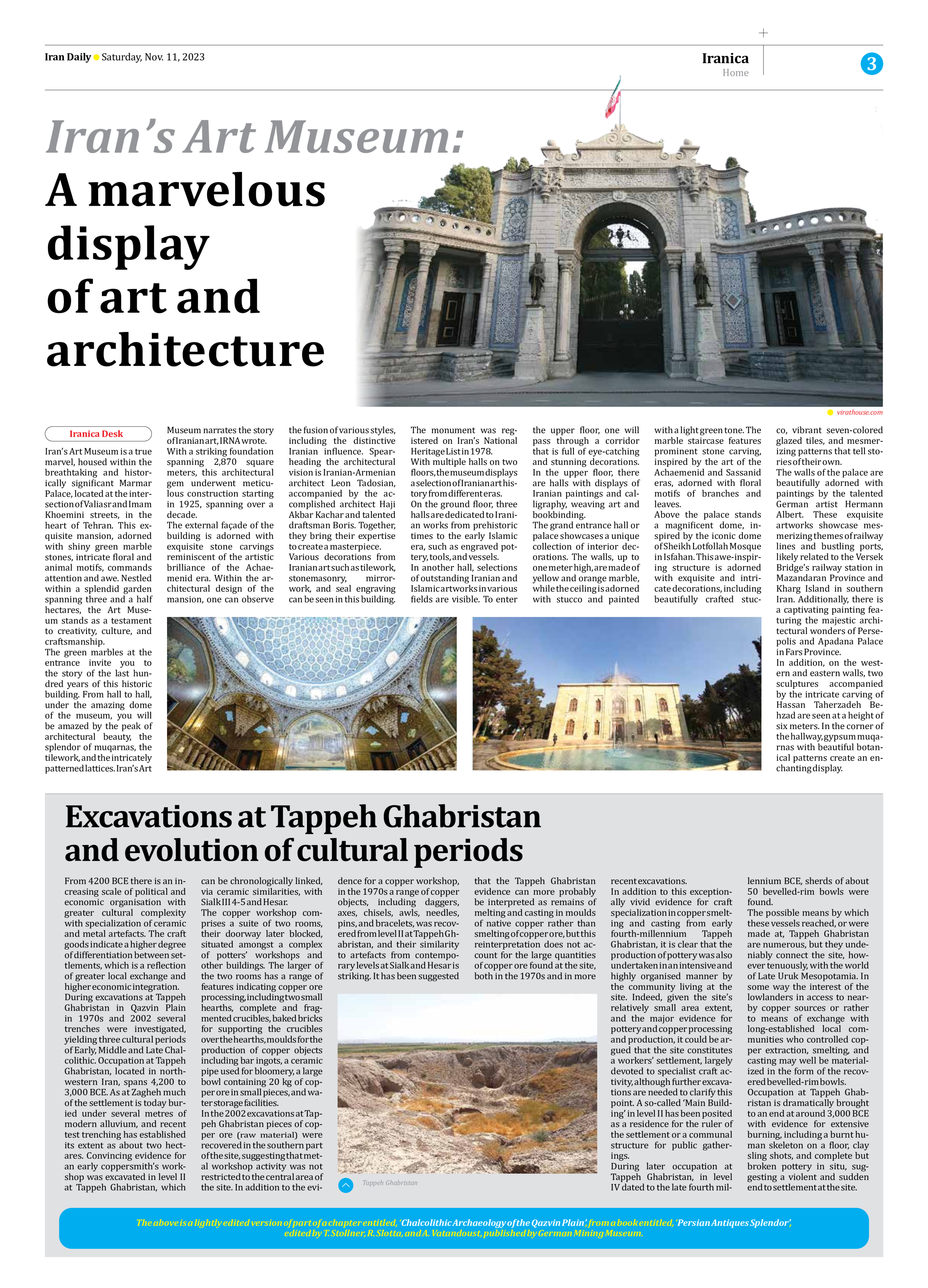
Iran’s Art Museum:
A marvelous display of art and architecture
Iran’s Art Museum is a true marvel, housed within the breathtaking and historically significant Marmar Palace, located at the intersection of Valiasr and Imam Khoemini streets, in the heart of Tehran. This exquisite mansion, adorned with shiny green marble stones, intricate floral and animal motifs, commands attention and awe. Nestled within a splendid garden spanning three and a half hectares, the Art Museum stands as a testament to creativity, culture, and craftsmanship.
The green marbles at the entrance invite you to the story of the last hundred years of this historic building. From hall to hall, under the amazing dome of the museum, you will be amazed by the peak of architectural beauty, the splendor of muqarnas, the tilework, and the intricately patterned lattices. Iran’s Art Museum narrates the story of Iranian art, IRNA wrote.
With a striking foundation spanning 2,870 square meters, this architectural gem underwent meticulous construction starting in 1925, spanning over a decade.
The external façade of the building is adorned with exquisite stone carvings reminiscent of the artistic brilliance of the Achaemenid era. Within the architectural design of the mansion, one can observe the fusion of various styles, including the distinctive Iranian influence. Spearheading the architectural vision is Iranian-Armenian architect Leon Tadosian, accompanied by the accomplished architect Haji Akbar Kachar and talented draftsman Boris. Together, they bring their expertise to create a masterpiece.
Various decorations from Iranian art such as tilework, stonemasonry, mirrorwork, and seal engraving can be seen in this building. The monument was registered on Iran’s National Heritage List in 1978.
With multiple halls on two floors, the museum displays a selection of Iranian art history from different eras.
On the ground floor, three halls are dedicated to Iranian works from prehistoric times to the early Islamic era, such as engraved pottery, tools, and vessels.
In another hall, selections of outstanding Iranian and Islamic artworks in various fields are visible. To enter the upper floor, one will pass through a corridor that is full of eye-catching and stunning decorations. In the upper floor, there are halls with displays of Iranian paintings and calligraphy, weaving art and bookbinding.
The grand entrance hall or palace showcases a unique collection of interior decorations. The walls, up to one meter high, are made of yellow and orange marble, while the ceiling is adorned with stucco and painted with a light green tone. The marble staircase features prominent stone carving, inspired by the art of the Achaemenid and Sassanid eras, adorned with floral motifs of branches and leaves.
Above the palace stands a magnificent dome, inspired by the iconic dome of Sheikh Lotfollah Mosque in Isfahan. This awe-inspiring structure is adorned with exquisite and intricate decorations, including beautifully crafted stucco, vibrant seven-colored glazed tiles, and mesmerizing patterns that tell stories of their own.
The walls of the palace are beautifully adorned with paintings by the talented German artist Hermann Albert. These exquisite artworks showcase mesmerizing themes of railway lines and bustling ports, likely related to the Versek Bridge’s railway station in Mazandaran Province and Kharg Island in southern Iran. Additionally, there is a captivating painting featuring the majestic architectural wonders of Persepolis and Apadana Palace in Fars Province.
In addition, on the western and eastern walls, two sculptures accompanied by the intricate carving of Hassan Taherzadeh Behzad are seen at a height of six meters. In the corner of the hallway, gypsum muqarnas with beautiful botanical patterns create an enchanting display.







